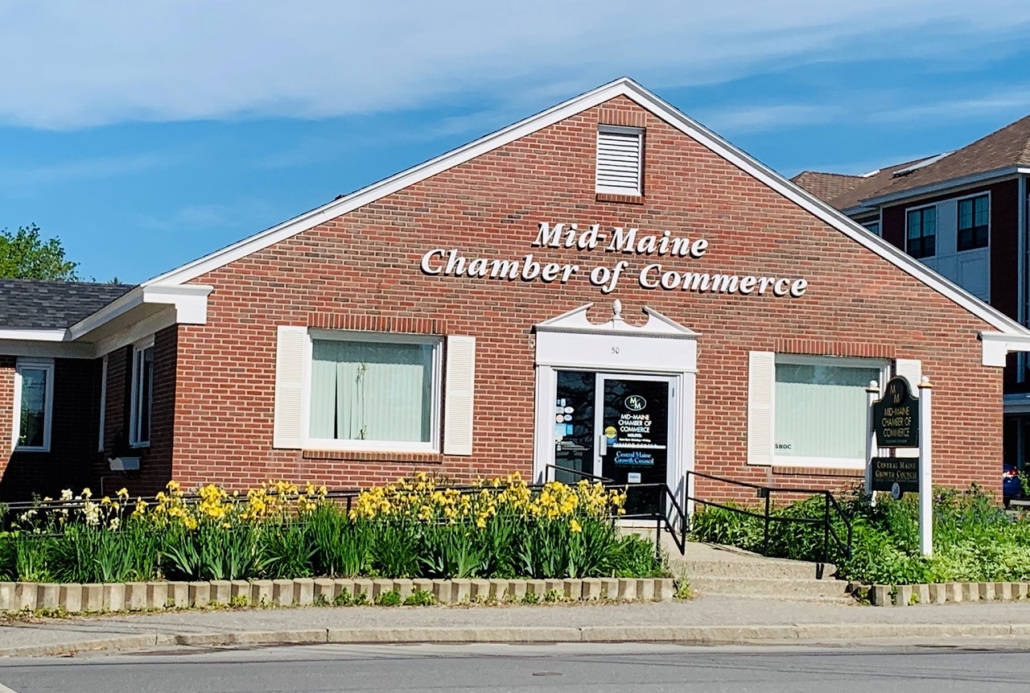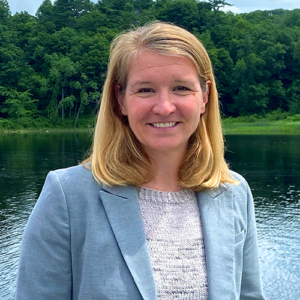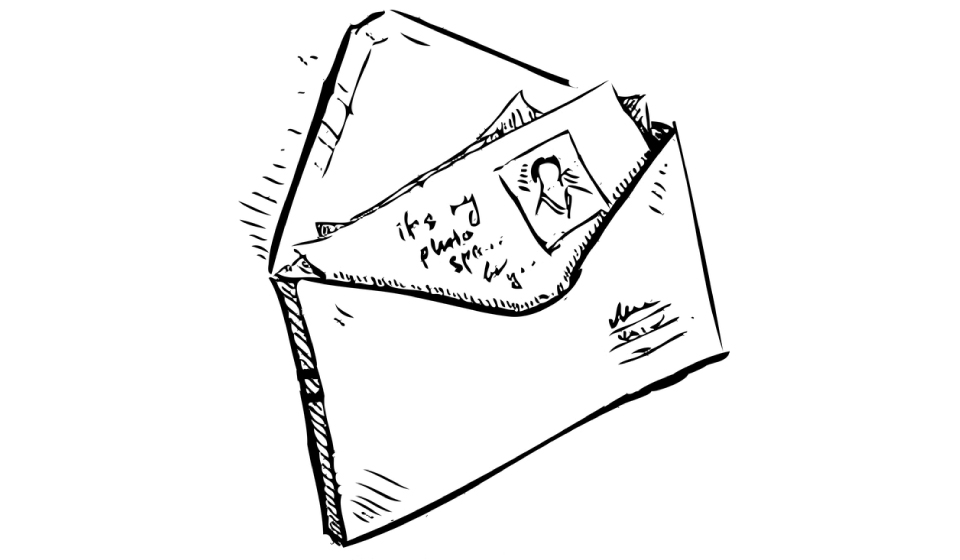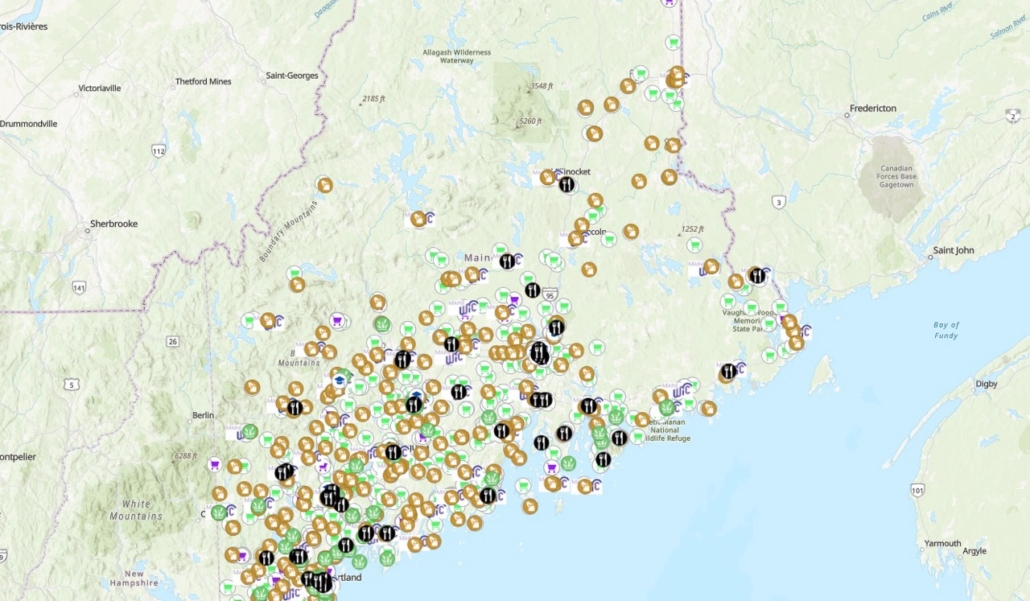Up and Down the Kennebec Valley: Last three Ballard children
 by Mary Grow
by Mary Grow
Last week’s article ended without finishing the story of Martha and Ephraim Ballard’s second son, Jonathan. When interrupted, he was living on his farm in the northern part of Augusta, on the road to Sidney, with his wife, Sarah “Sally” (Pierce), and an increasing number of children.
In December 1799, Martha and Ephraim moved into a new house on Jonathan’s farm. In February 1804, while Ephraim Sr, was in jail for debt, youngest son Ephraim Jr., married (see below) Mary Farwell. After the couple “went to housekeeping” in July and moved out of either parent’s home, Mary’s widowed mother, called in the diary “Sister Farewell,” and younger sister Sally moved in with Martha.
On Oct. 25, 1804, Martha wrote, Sally Farwell brought a message from Jonathan: he was going to take over Martha’s house in two weeks. Martha, he said, could “tarrie here [with them] or go and liv in their house and see how good it was to bring water from this wel.”
Ulrich said that in addition to having an inadequate well, Jonathan’s house was older and lacked “a bake oven.” Though Martha thought his demand another example of “his impetuous and irrational behavior,” it might have seemed reasonable to him: better living quarters for his growing family and, if Martha chose to stay with them, help for her.
Martha shared what had been her house with Jonathan, Sally and children until Sept. 14, 1805. Over the winter of 1804-05, she spent time with daughter Dolly Lambard and her family (see below) and with Ephraim, Jr. During the summer of 1805, Ulrich wrote, she stayed with Jonathan and Sally, helping with gardening and other chores, including taking case of the many grandchildren who lived and visited there.
A dozen people lived in the house in the spring of 1805, Ulrich wrote, and 21 other people visited for a meal or overnight in one month. Most were much younger than Martha (who was born in February 1735). Ulrich quoted an April 14, 1805, entry: “I have felt very unwell but have had the nois of Children out of 5 famelys to Bear….Some fighting, some playing and not a little profanity has been performd.”
Five days later, on April 19, 1805, Ulrich noted, “Sally gave birth to her sixth son and ninth child.” (This boy was Samuel Adams Ballard; he died Nov. 27, 1806.)
Ephraim Sr., was freed from jail on May 29, 1805, but his return to the family made no difference. On June 7, Martha wrote that Sally told her she would not get her house to herself that summer.
Ulrich quoted diary references to Sally’s “tantrums”; to her calling Martha a liar; and to Martha describing Sally as “inconsiderate” and “very impudent.” Sally, too, was overworked and unhappy.
Although Martha never “developed an intense and daily intimacy with Jonathan and Sally,” Ulrich wrote that she came to appreciate “the small gifts of love and care they were able to offer”; and Sally’s “immense” burdens became less as her children got old enough to help.
In late August, 1805, relying on the diary, Ulrich reported the start of a new house for Jonathan’s family. On Sept. 14, Martha wrote that they had moved back to their old one, leaving Martha and Ephraim in theirs.
FamilySearch and WikiTree say Jonathan Ballard died in Augusta on June 7, 1838. Sally was living with daughter Hannah and family in 1850; she died on July 1, 1858.
* * * * * *
Martha and Ephraim’s daughter Hannah was born Aug. 6, 1769, in Oxford. On Oct. 28, 1792, in Augusta, she married Moses Pollard (the couple became “daughter Pollard” and “son Pollard” in Martha’s diary).
WikiTree lists nine Pollard children, “although records are scant and there may be other children.” Ulrich also said nine, though she pointed out that Hannah and Moses could have had more after Martha’s diary ended in May, 1812 (when Hannah was almost 43).
According to the diary excerpts, Hannah’s first child was born in July 1794. WikiTree names this child as daughter Rhoda, who married James Black in Sidney on June 30, 1816.
Ulrich said after the second child was born in October 1795, Hannah was so sick as to be delirious, and could not join the family for meals for six weeks. WikiTree says this child was daughter Hannah (Oct. 18, 1795 — May 14, 1863).
WikiTree then lists 3) Sally, born in 1797, and 4) Harry, born in 1799 and died March 5, 1800, in Augusta.
Martha said Hannah had another child just after midnight on Jan. 11, 1801. WikiTree names a son 5) Samuel (1801 — Feb. 22, 1870).
WikiTree then lists 6) Dorothy, aka Dolly (1803 — Feb. 1, 1881); 7) Thomas L. (born in 1804, in 1849 married Mary R. McIntire, widow of his first cousin, James S. Ballard); and 8) Martha Moore (1807 — Sept. 11, 1880).
WikiTree says Hannah and Moses’ ninth child, Catherine Nason, was born in 1809 and died in Augusta, May 1, 1882. On May 28, 1809, Martha wrote that “son Pollard” called her at 2:30 a.m., and at 6 a.m. Hannah gave birth to her sixth daughter and ninth child.
Hannah died May 25, 1863, according to FamilySearch, in Augusta; she is buried in Slowhegan, where she had been living in 1850 (when the town was named Bloomfield).
* * * * * *
Ephraim and Martha’s fifth child, Dorothy (Dolly), was born, according to FamilySearch, on Sept. 2, 1772, in Oxford. On May 14, 1795, in Hallowell, she married Barnabas Lambard, born Sept. 1, 1772.
On April 3, 1797, after Hallowell’s northern part became the new town of Harrington (changed to Augusta on June 9), voters at the first town meeting elected Barnabas Lambard a fence-viewer and a surveyor of lumber, according to Captain Charles Nash’s chapter in Henry Kingsbury’s Kennebec County history. In 1799 he was a member of the town’s first “company of firemen.”
FamilySearch says the Lambards had at least 12 children, six sons and six daughters, between 1796 and 1816. Ulrich and Augusta historian James North (in a brief biography of Barnabas Lambard) say 11.
According to FamilySearch’s list, the first child was a son, Allen, born July 22, 1796, died Sept. 5, 1877. He was followed by 2) Dorothy, born Nov. 11, 1797, death date unknown; 3) Thomas, born Aug. 10, 1799, died Oct. 12, 1804, aged five; 4) Barnabas, Jr., born April 17, 1801, died Sept. 25, 1814, aged 14; 5) Lucy L., born Jan. 31, 1803, married in 1822 Asaph R. Nichols, with whom she had at least nine children, died Oct. 17, 1884, in Boston (she had been in Augusta in 1880); 6) William, born Nov. 21, 1804, died Feb. 15 or 19, 1839; 7) Henry Augustus, born Dec. 26, 1806, died March 27, 1821, aged 14; 8) Sarah Farwell, born June 25, 1809, lived in Augusta until at least 1880, apparently unmarried, died in 1896 in Natick, Massachusetts; 9) Martha Town, born April 4, 1811, died July 27, 1823, aged 12; 10) Thomas, born June 29, 1813, married, lived in Augusta at least until 1870 and died in Boston Sept. 28, 1892; 11) Hannah Pollard, born March 29, 1816, married Rev. John A. Henry in September, 1842 (and after his death, Edward Walcott of Natick, Massachusetts, in 1850, North wrote), died Aug. 12, 1896, in Natick; and 12), according to FamilySearch, another Hannah, also born in 1816, who married David Waire or Wire, had at least eight children, died May 19, 1895.
(FamilySearch says when the first Hannah was born in March 1816, her parents were both 43 years old, and when the second was born the same year, they were 44. Making the two births chronologically possible does not explain the duplicate names.)
Dolly Lambard died March 14, 1861, in Augusta; her husband had died Oct. 10, 1860, FamilySearch says.
* * * * * *
Ephraim Ballard Jr., according to an unusually complete biography on Wikipedia, was born in Augusta on March 30, 1779. Wikipedia calls him “an engineer and a builder,” descriptions compatible with things Ulrich wrote about him.
According to Wikipedia, Ballard and Benjamin Brown built Augusta’s second Kennebec River bridge in 1818; and after it burned on April 2, 1827, Ballard was hired to replace it. North wrote that the work was “pushed forward with unexampled dispatch for this region”; the new bridge opened for foot traffic on Aug. 3 and for carriages on August 18.
In 1829, Wikipedia says, Ballard was chosen to build “the Mattanawcook road.” (Mattanawcook was the Town of Lincoln’s name until the Maine legislature changed it, in 1829). He “was between Augusta and Mattanawcook when he contracted typhoid fever and died at Bangor,” on Nov. 5, 1829.
Ballard’s first wife was Mary Farwell (born June 21, 1785), whom he married in Augusta on Feb. 5, 1804. Their first daughter, whom they named Mary, was born four months after the wedding, and died when she was three months old.
WikiTree lists the rest of Mary and Ephraim Ballard Jr.’s children as: 2) Sophia, born Nov. 3, 1805, married Charles Keene, died Dec. 24, 1847); 3) Theodore Sedgwick, born Nov. 3, 1805, died March 1839; 4) Amelia, born and died in 1808; 5) an unnamed daughter, born June 25, 1809; 6) Edward, born June 4, 1814, died in Chicago, May 31, 1871; and 7) Charles Henry, born about 1815, died Nov. 11, 1841.
As usual, other websites give different information.
Mary Farwell Ballard died March 13, 1819, aged 33. On Jan. 7, 1822, in Augusta, Ballard married Paulina Palmer, who was born about 1795.
Paulina might have given him more children. After Ephraim’s death in 1829, Wikipedia cites the 1830 census that lists Paulina’s Augusta household as including “one female 30 to 39 [Paulina], one male under 5, one male 5 to 9, one male 10 to 14, one male 15 to 19, one male 20 to 29, one male 70 to 79, one female under 5, and two females 5 to 9.”
Paulina remarried in December 1833; her second husband was named Jonah Dunn.
* * * * * *
As previously written, Martha Moore Ballard died in late May 1812, aged 77. Her widower, Ephraim Sr., died in 1821, aged 96.
Readers of this and the preceding article will have noticed what different historical records the Ballard children and their spouses left. The men owned land and buildings, farmed, practiced professions and held town offices. The women bore children.
This subseries began on Nov. 6 with two themes: women in the late 1700s and early 1800s worked as hard and as long as men, but their work left no historical record. Martha Ballard’s diary was a rare exception.
Ulrich pointed out that except for the diary, “Martha has no history….no independent record of her work survives.” She is not listed in financial records, or as a church member, or in legal records.
“Without the diary, even her name would be uncertain,” Ulrich wrote. Once Martha married, her name became “Mrs. Ballard.” Minister Benjamin Tappin, who brought her comfort in the last weeks of her life, thought her first name was Dorothy; historian North called her Hannah in his genealogy.
“Fortunately, she had the good sense to write firmly at the end of one of her homemade booklets, Martha Ballard Her Diary, Ulrich said.
The other theme in the Nov. 6 article was that women’s work is never done. Martha, too, noticed that.
Ulrich quoted a diary excerpt, written as midnight approached on Nov. 26, 1795, in which 60-year-old Martha summarized her day doing housework, nursing a cow and keeping up with two paid helpers and various family members.
Martha said, “A womans work is never Done as the Song says and happy shee whos strength holds out to the End of the rais.”
Main sources
North, James W., The History of Augusta (1870)
Ulrich, Laurel Thatcher, A Midwife’s Tale The Life of Martha Ballard, Based on Her Diary, 1785-1812, 1990
Websites, miscellaneous.



 Join Mid-Maine Chamber of Commerce and area businesses for Shop Small Saturday Mid-Maine – and shop ‘til you drop!
Join Mid-Maine Chamber of Commerce and area businesses for Shop Small Saturday Mid-Maine – and shop ‘til you drop!
 To the editor:
To the editor: The Maine Department of Agriculture, Conservation and Forestry (DACF) today announced the launch of the Maine Food Access Map, a statewide interactive resource that helps individuals and families locate nearby food pantries, meal sites, school-based programs, WIC clinics, and other free or donation-based food assistance services.
The Maine Department of Agriculture, Conservation and Forestry (DACF) today announced the launch of the Maine Food Access Map, a statewide interactive resource that helps individuals and families locate nearby food pantries, meal sites, school-based programs, WIC clinics, and other free or donation-based food assistance services.


